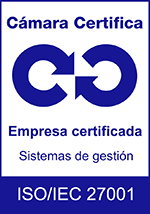Operational Risk strategies must take into account productivity and competitiveness in order to bring effectiveness and greater value to your company.
Many companies believe that as long as their employees fully comply with procedures, they will achieve safety in their operations. Unfortunately, risk reduction is not so simple as we may risk not meeting the organization’s productivity goals. Only those companies that have decided to go beyond the fulfillment of tasks have been able to achieve optimal results with safe production without sacrificing their competitiveness.
The expert in Operational Risk Management solutions, Alfonsius Ariawan, assures that, in order to guarantee the effectiveness of risk management, security activities should not be separated from the company’s commercial objectives, so that they generate greater value for the business.
In the following publication from the EHS Today website: https://www.ehstoday.com/safety-leadership/want-reduce-risk-then-don-t-get-too-caught-procedure. Ariawan argues that the achievement of results must be based on the implementation of an integrated framework in which four key components are found: 1) the mentality and behavior of employees; 2) Organizational management and good corporate governance; 3) The application of optimized processes through the use of technologies; and 4) The capabilities and competencies of workers to reinforce the safety of operations.
-
Employee mentality and behavior
Psychologically, the concept of risk is more personal to employees than safety. Workers decide on a daily basis whether it is acceptable to take a risk, but often consider “safety” to be the company’s responsibility. Shifting the mindset of employees to risk-based thinking will ensure greater staff involvement in monitoring the safety of operations.
The following graph compares both concepts:

Graph. Translated by Laragon. / Author: Alfonsius Ariawan
-
Good Governance and Management
Because an organization’s resources are limited, they must be applied judiciously to ensure maximum risk reduction. To do this, organizations must have a clear understanding of their operational risk profile, which is assessed against common definitions of probability and impact, and prioritize the approach and ownership of risks based on a defined tolerance.
Not all risks are equal. Some events are less likely to occur, but carry impacts that can be devastating (e.g., multiple fatalities, prolonged equipment downtime, bankruptcy, etc.). Other events are more likely, but have much less severe impacts (e.g., minor injuries, after-hours work, etc.).
In doing so, companies should place sufficient emphasis on risks that can lead to large-scale incidents and, in addition, pay attention to other important indicators of possible significant long-term events.
-
Processes and technologies
Risk management requires systemic thinking. When conducting security incident investigations, root causes must be identified at the system level and addressed accordingly to prevent recurrence. If system problems are not identified and addressed, incidents may recur in the future.
By extension, to prevent the occurrence of security incidents, organizations need to manage risks at the system level, recognizing the interconnectivity of the various processes that comprise it. Unfortunately, many companies seem to have problems and their executives recognize that there are gaps between their existing systems, preventing effective integration.
-
Capabilities and competencies
Ultimately, any security management system must be run by people. It will not produce the desired results without a workforce that is capable and has the right mindset and discipline to execute, and without the processes to manage employee performance.
Leveraging the day-to-day operational knowledge of front-line personnel in the workspace: a plant, a shop floor, in the field, etc. is a key success factor in any cultural transformation. Organizations must recognize that these personnel are a critical level of protection within their operations. These workers are more familiar with the organization’s activities, equipment and processes and, therefore, with the risks. They must be adequately engaged, empowered and supported.
Finally, it is important for leaders to be “affective” in their approach to risk management. Company executives should strive to foster a trustworthy work environment, and their leadership style should demonstrate humility and partnership with employees.
Given the daily demands of an organization, it is easy to adopt a mindset of assuming that as long as procedures are followed, the company is operating safely and productively. All too often, this false sense of security eventually gives way to an incident that will affect the organization.
By focusing more on risk reduction outcomes and linking risk mitigation activities to the organization’s business strategies, companies can improve operations and productivity.
Laragon offers the best technological solutions to pilot these processes, working with global market leaders in EHS and Operational Risk Management.
If you would like to know more about our experiences with clients in this area, please contact us by calling us at: +34 91 254 7019 or by email: [email protected].




